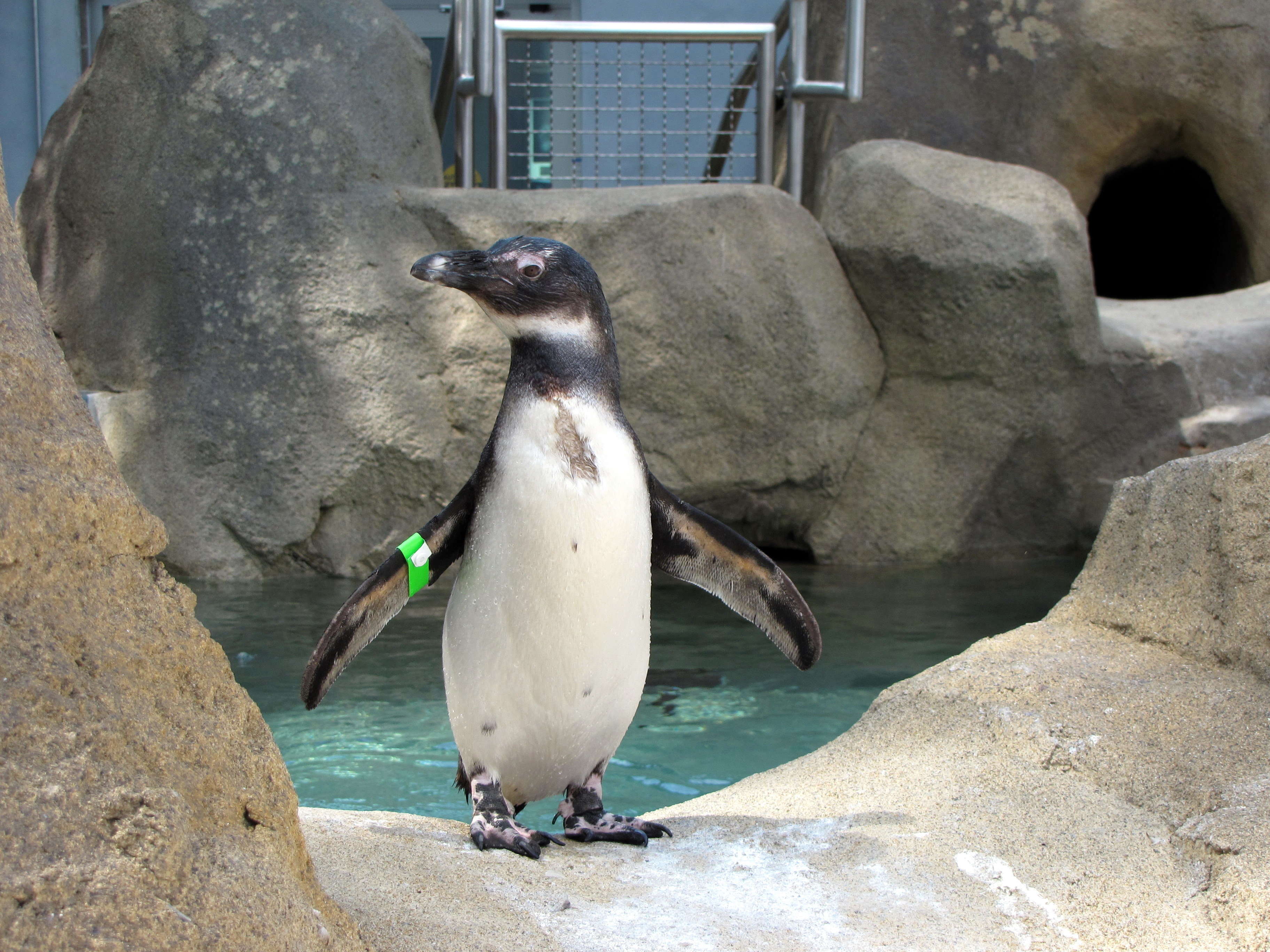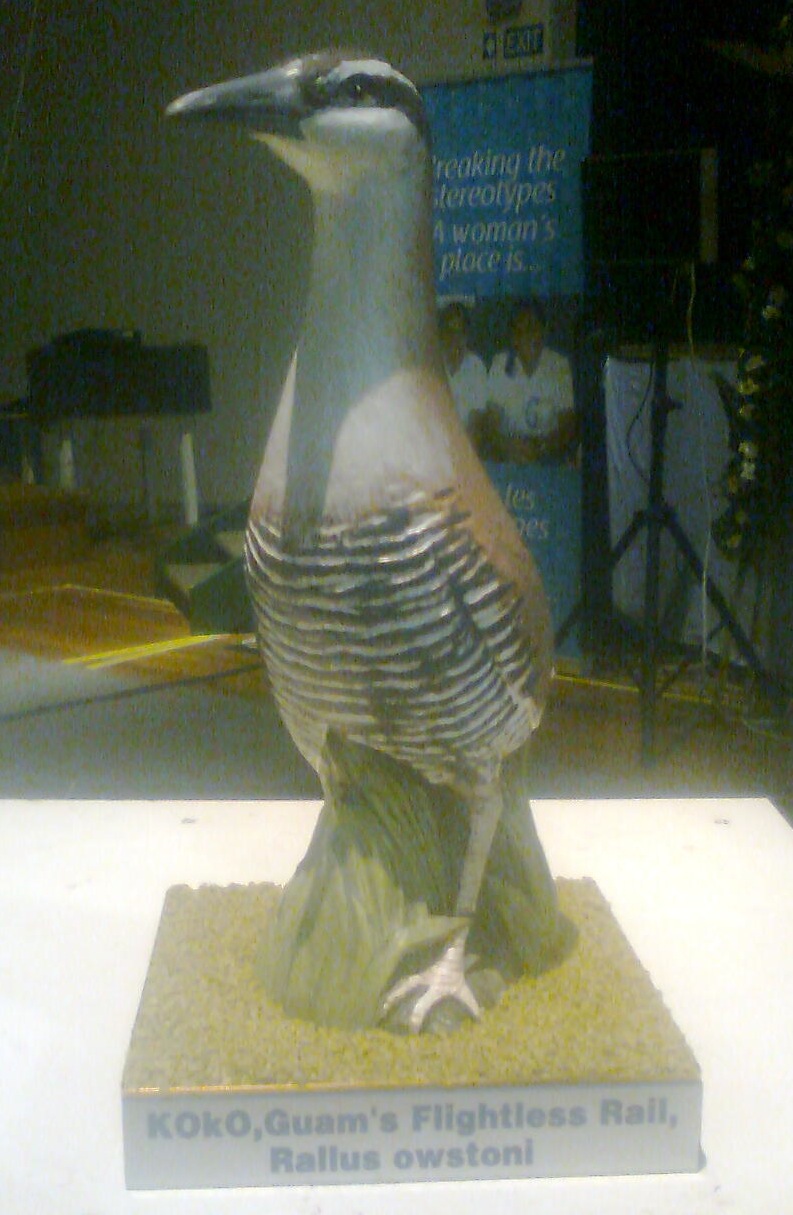|
National Aviary
The National Aviary, located in Pittsburgh, Pennsylvania, Pittsburgh, Pennsylvania, is the only independent indoor nonprofit aviary in the United States. It is also the country's largest aviary, and the only one accorded honorary "National" status by the United States Congress. The aviary is home to more than 500 birds representing more than 150 species, and is a member of the Association of Zoos and Aquariums (AZA). Location and features The National Aviary is located at 700 Arch Street on Pittsburgh, Pennsylvania, Pittsburgh's North Side (Pittsburgh), Northside, within Allegheny Commons West Park, Pittsburgh, West Park in the Allegheny Center (Pittsburgh), Allegheny Center neighborhood. The National Aviary is open daily except Thanksgiving Day, Christmas Eve, and Christmas. Although some of the birds must be fed in private, almost all feedings (both vegetarian and carnivorous) are scheduled to be viewable by visitors. Since 1999, annual attendance has consistently topped 100, ... [...More Info...] [...Related Items...] OR: [Wikipedia] [Google] [Baidu] |
West Park, Pittsburgh
Allegheny Commons is a municipal park located in Pittsburgh's North Side. The park surrounds the neighborhood of Allegheny Center. Dating to 1867, it is the oldest park in the city of Pittsburgh.Note, however, that it did not become part of Pittsburgh until the annexation of Allegheny, Pennsylvania, in 1907. History The park was once free grazing land whicsurrounded the first 32 blocksof Allegheny City in John Redick's 1784 town plan. It was re-made into a municipal park in the 1860s by landscape architects hired by Allegheny City. Allegheny Commons Park has three main parts, all of which are in the Allegheny Center neighborhood: Allegheny Commons Park West Park, Allegheny Commons Park North Park, and Allegheny Commons Park East Park. The West Park portion is the largest of the three, and it has housed the National Aviary since 1952. A non-profit organization, The Allegheny Commons Initiative maintains the park acting as a liaison between it and the city through advocacy, fun ... [...More Info...] [...Related Items...] OR: [Wikipedia] [Google] [Baidu] |
Hyacinth Macaw
The hyacinth macaw (''Anodorhynchus hyacinthinus''), or hyacinthine macaw, is a parrot native to central and eastern South America. With a length (from the top of its head to the tip of its long pointed tail) of about one meter it is longer than any other species of parrot. It is the largest macaw and the largest flying parrot species; the flightless kākāpō of New Zealand outweighs it at up to 3.5 kg. While generally easily recognized, it could be confused with the smaller Lear's macaw. Habitat loss and the trapping of wild birds for the pet trade have taken a heavy toll on their population in the wild, so the species is classified as Vulnerable on the International Union for Conservation of Nature's Red List, and it is protected by its listing on Appendix I of the Convention on International Trade in Endangered Species of Wild Fauna and Flora (CITES). Taxonomy English physician, ornithologist, and artist John Latham first described the hyacinth macaw in 1790 under ... [...More Info...] [...Related Items...] OR: [Wikipedia] [Google] [Baidu] |
Phipps Conservatory
Phipps Conservatory and Botanical Gardens is a botanical garden set in Schenley Park, Pittsburgh, Pennsylvania, United States. It is a City of Pittsburgh historic landmark and is listed on the National Register of Historic Places. The gardens were founded in 1893 by steel and real-estate magnate Henry Phipps Jr. as a gift to the City of Pittsburgh. Its purpose is to educate and entertain the people of Pittsburgh with formal gardens (Roman, English, etc.) and various species of exotic plants (palm trees, succulents, bonsai, orchids, etc.). Currently, the facilities house elaborate gardens within the fourteen room conservatory itself and on the adjoining grounds. In addition to its primary flora exhibits, the sophisticated glass and metalwork of the Lord & Burnham conservatory offers an interesting example of Victorian greenhouse architecture. Phipps is one of the "greenest" facilities in the world. The entrance pavilion of the Phipps Conservatory has silver-level LEED certifica ... [...More Info...] [...Related Items...] OR: [Wikipedia] [Google] [Baidu] |
Conservatory (greenhouse)
A conservatory is a building or room having glass or other transparent roofing and walls used as a greenhouse or a sunroom. Usually it refers to a space attached to a conventional building such as a house, especially in the United Kingdom. Elsewhere, especially in America, it can often refer to a large free-standing glass-walled building in a botanic garden or park, sometimes also called a palm house if tall enough for trees. Municipal conservatories became popular in the early 19th century. Description Many cities, especially those in cold climates and with large European populations, have built municipal conservatories to display tropical plants and hold flower displays. This type of conservatory was popular in the early nineteenth century, and by the end of the century people were also giving them a social use (e.g., tea parties). Conservatory architecture varies from typical Victorian glasshouses to modern styles, such as geodesic domes. Many were large and impressive ... [...More Info...] [...Related Items...] OR: [Wikipedia] [Google] [Baidu] |
Guam Rail
The Guam rail (''Hypotaenidia owstoni'') is a species of flightless bird, endemic to the United States territory of Guam, where it is known locally as the ''Ko'ko bird. The Guam rail disappeared from southern Guam in the early 1970s and was extirpated from the entire island by the late 1980s. This species is now being bred in captivity by the Division of Aquatic and Wildlife Resources on Guam and at some mainland U.S. zoos. Since 1995, more than 100 rails have been introduced on the island of Rota in the Commonwealth of the Northern Mariana Islands in an attempt to establish a wild breeding colony. Although at least one chick resulted from these efforts, feral cat predation and accidental deaths have been extremely high. In 2010, 16 birds were released onto Cocos Island, with 12 more being introduced in 2012. In 2019, the species became only the second bird after the California condor to be reclassified by the IUCN from extinct in the wild to critically endangered. Backgrou ... [...More Info...] [...Related Items...] OR: [Wikipedia] [Google] [Baidu] |
Pittsburgh Tribune-Review
The ''Pittsburgh Tribune-Review'', also known as "the Trib," is the second largest daily newspaper serving metropolitan Pittsburgh, Pennsylvania, in the United States. Although it transitioned to an all-digital format on December 1, 2016, it remains the second largest daily in the state, with nearly one million unique page views a month. Founded on August 22, 1811, as the ''Greensburg Gazette'' and in 1889 consolidated with several papers into the ''Greensburg Tribune-Review'', the paper circulated only in the eastern suburban counties of Westmoreland and parts of Indiana and Fayette until May 1992, when it began serving all of the Pittsburgh metropolitan area after a strike at the two Pittsburgh dailies, the ''Pittsburgh Post-Gazette'' and ''Pittsburgh Press'', deprived the city of a newspaper for several months. The Tribune-Review Publishing Company was owned by Richard Mellon Scaife, an heir to the Mellon banking, oil, and aluminum fortune, until his death in July 2014. Sca ... [...More Info...] [...Related Items...] OR: [Wikipedia] [Google] [Baidu] |
Eurasian Eagle-owl
The Eurasian eagle-owl (''Bubo bubo'') is a species of eagle-owl that resides in much of Palearctic, Eurasia. It is also called the Uhu and it is occasionally abbreviated to just the eagle-owl in Europe. It is one of the largest species of owl, and females can grow to a total length of 75 cm (30 in), with a wingspan of 188 cm (6 ft 2 in), with males being slightly smaller.''Owls of the World: A Photographic Guide'' by Mikkola, H. Firefly Books (2012), This bird has distinctive ear tufts, with upper parts that are mottled with darker blackish colouring and tawny. The wings and tail are barred. The underparts are a variably hued buff, streaked with darker colouring. The facial disc is not very defined and the orange eyes are distinctive.Penteriani, V., & del Mar Delgado, M. (2019). ''The eagle owl''. Bloomsbury Publishing. Eurasian eagle-owls are found in many habitats, but are mostly birds of Mountain ecosystems, mountainous regions or other Rock (geolog ... [...More Info...] [...Related Items...] OR: [Wikipedia] [Google] [Baidu] |
Indian Peacock
The Indian peafowl (''Pavo cristatus''), also known as the common peafowl, and blue peafowl, is a peafowl species native to the Indian subcontinent. It has been introduced to many other countries. Male peafowl are referred to as peacocks, and female peafowl are referred to as peahens, even though peafowl of either sex are often referred to colloquially as "peacocks". Indian peafowl display a marked form of sexual dimorphism. The peacock is brightly coloured, with a predominantly blue fan-like crest of spatula-tipped wire-like feathers and is best known for the long train made up of elongated upper-tail covert feathers which bear colourful eyespots. These stiff feathers are raised into a fan and quivered in a display during courtship. Despite the length and size of these covert feathers, peacocks are still capable of flight. Peahens lack the train, have a white face and iridescent green lower neck, and dull brown plumage. The Indian peafowl lives mainly on the ground in open fo ... [...More Info...] [...Related Items...] OR: [Wikipedia] [Google] [Baidu] |
Guam Kingfisher
The Guam kingfisher (''Todiramphus cinnamominus'') is a species of kingfisher from the United States Territory of Guam. It is restricted to a captive breeding program following its extinction in the wild due primarily to predation by the introduced brown tree snake. Taxonomy and description In the indigenous Chamorro language, it is referred to as ''sihek''. The mysterious extinct Ryūkyū kingfisher, known from a single specimen, is sometimes placed as a subspecies (''T. c. miyakoensis''; Fry ''et al.'' 1992), but was declared invalid by the International Ornithological Congress in 2022, rendering the species monotypic. Among-island differences in morphological, behavioral, and ecological characteristics have been determined sufficient that Micronesian kingfisher populations, of which the Guam kingfisher was considered a subspecies, should be split into separate species. This is a brilliantly colored, medium-sized kingfisher, 20–24 cm in length. They have iridescent ... [...More Info...] [...Related Items...] OR: [Wikipedia] [Google] [Baidu] |
Extinct
Extinction is the termination of a kind of organism or of a group of kinds (taxon), usually a species. The moment of extinction is generally considered to be the death of the last individual of the species, although the capacity to breed and recover may have been lost before this point. Because a species' potential range may be very large, determining this moment is difficult, and is usually done retrospectively. This difficulty leads to phenomena such as Lazarus taxa, where a species presumed extinct abruptly "reappears" (typically in the fossil record) after a period of apparent absence. More than 99% of all species that ever lived on Earth, amounting to over five billion species, are estimated to have died out. It is estimated that there are currently around 8.7 million species of eukaryote globally, and possibly many times more if microorganisms, like bacteria, are included. Notable extinct animal species include non-avian dinosaurs, saber-toothed cats, dodos, m ... [...More Info...] [...Related Items...] OR: [Wikipedia] [Google] [Baidu] |
Species Survival Plan
The American Species Survival Plan or SSP program was developed in 1981 by the (American) Association of Zoos and Aquariums to help ensure the survival of selected species in zoos and aquariums, most of which are threatened or endangered in the wild. SSP program SSP programs focus on animals that are near threatened, threatened, endangered, or otherwise in danger of extinction in the wild, when zoo and zoology conservationists believe captive breeding programs will aid in their chances of survival."Species Survival Plans help preserve wildlife" on the Central Florida Zoo website. These programs help maintain healthy and genetically diverse animal populations within the Association of Zoos and Aquariums- ... [...More Info...] [...Related Items...] OR: [Wikipedia] [Google] [Baidu] |
Benjamin Franklin
Benjamin Franklin ( April 17, 1790) was an American polymath who was active as a writer, scientist, inventor, statesman, diplomat, printer, publisher, and political philosopher. Encyclopædia Britannica, Wood, 2021 Among the leading intellectuals of his time, Franklin was one of the Founding Fathers of the United States, a drafter and signer of the United States Declaration of Independence, and the first United States Postmaster General. As a scientist, he was a major figure in the American Enlightenment and the history of physics for his studies of electricity, and for charting and naming the current still known as the Gulf Stream. As an inventor, he is known for the lightning rod, bifocals, and the Franklin stove, among others. He founded many civic organizations, including the Library Company, Philadelphia's first fire department, and the University of Pennsylvania. Isaacson, 2004, p. Franklin earned the title of "The First American" for his early and indefa ... [...More Info...] [...Related Items...] OR: [Wikipedia] [Google] [Baidu] |





.jpg)

.jpg)